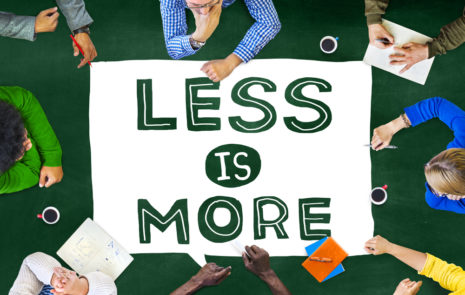
Emotional messages move people
Emotional messages move people. So put emotion into your message map.
Home base is the heart and soul of your Message Map
That’s why the home base always appears in the center of your Message Map.

How can you make your home base great? In the eyes of your audience, a great home base does 7 jobs well – it:
- Captures attention and pulls in your audience.
- Stirs people’s emotions, which is crucial since people make decisions based on emotions.
- Leads with audience benefits by answering: what’s in it for me?
- Reflects empathy for audiences, and a deep understanding of their wants and needs.
- Is simple, memorable, and easy to share.
- Paints a picture with words, to engage human brains on multiple levels.
- Sounds good by using rhythm, rhyme, alliteration, and other mnemonic devices.
Keep your home base simple
Why? Because the simpler it is, the more memorable it will be. And that makes it easier for people to share. You say a simple message today and people in your audience can repeat it tomorrow.
As Steve Jobs said, “Simple can be harder than complex: You have to work hard to get your thinking clean to make it simple. But it’s worth it in the end because once you get there, you can move mountains.”
A great home base helps you move mountains by influencing what people think and feel about your brand. You need a home base that resonates with your audiences on an emotional level. One that clearly answers their first question, “What’s in it for me?”

Put heart into your emotional messages
Why focus on emotions in your home base message? Harvard researcher Gerald Zaltman estimates that people make 95% of buying decisions subconsciously, Inc. magazine reported. People might think they make buying decisions rationally, when in fact their emotions are in charge. That’s why emotional content outperforms purely rational content about two to one, based on research using the IPA databank.
Maximize rewards for your audience by stating clear and emotional benefits as your audience sees them, in their words. Emphasize the emotional benefits people perceive over the physical benefits you provide.
Fast Company reported that purely emotional content performs best with audiences, based on an analysis of 1,400 successful advertising campaigns: “Campaigns with purely emotional content performed about twice as well (31% vs. 16%) as those with only rational content (and did a little better than those that mixed emotional and rational content).” Here’s a way to visualize that finding:

Emotions drive people’s decisions. One reason is that people process sensory information in the emotional brain faster than in the cognitive brain.
Focus first on people’s emotions
Let’s look at a Message Map that puts emotions first. For example, here’s the home base for a Children’s Museum:
This home base message is “The Children’s Museum helps prepare kids for future success.” This home base message works because it paints a picture of kids growing up, reflects empathy for kids and stirs strong emotions. For the museum’s audience of parents with children, this message really resonates.
What do people care about the most? A St. Louis Post-Dispatch study set out to determine which topic was most important to the newspaper’s readers. It wasn’t their families, children or God. “Instead, their answer was: ‘Me,'” said Dick Weiss, a former editor.
People care most about themselves.
You do too. Imagine that you open up today’s New York Times and see your name in a headline. It’s salient – noticeable and prominent, obviously standing out.
Audiences want equally salient messages. Messages about them and their lives are the most compelling messages. Especially when they’re emotional messages.
A study of digital news consumption by Reuters Institute and the University of Oxford found that people have more news sources to choose from than ever before. With so many choices available, people decide which stories are worth their time based on relevance. The stories that matter most to them affect people’s personal lives, family, workplace, leisure activities and local communities.
People also choose stories they think friends and family might be interested in, to share with them. “People frequently click on stories that are amusing, trivial, or weird … But they maintain a clear sense of what is trivial and what matters,” the study found.
What matters most in your Message Map is the answer to the emotional question: what’s in it for me? A great home base message offers an emotional answer to your audience’s first question.
Related Posts
With Message Maps, Intel Helps Simplify Product Positioning
Marketers from Intel participated in my recent ANA content marketing workshop. In my workshops, marketers learn how to create Message Maps to clarify and...
Marketers: How to get back on track when you feel overwhelmed
I was overwhelmed. One of our beloved pets passed away. It was the final straw for me after years of pandemic life and stress...
4 ideas to help you eliminate unnecessary marketing work
How a clear mission, strategy and message save you time Company leaders expect more and more from marketing. They want more of a business...
Is your marketing message too generic?
To create a successful marketing message, you need to avoid 6 traps that hurt brands’ messages. Today we’ll discuss trap #2, choosing a generic...





